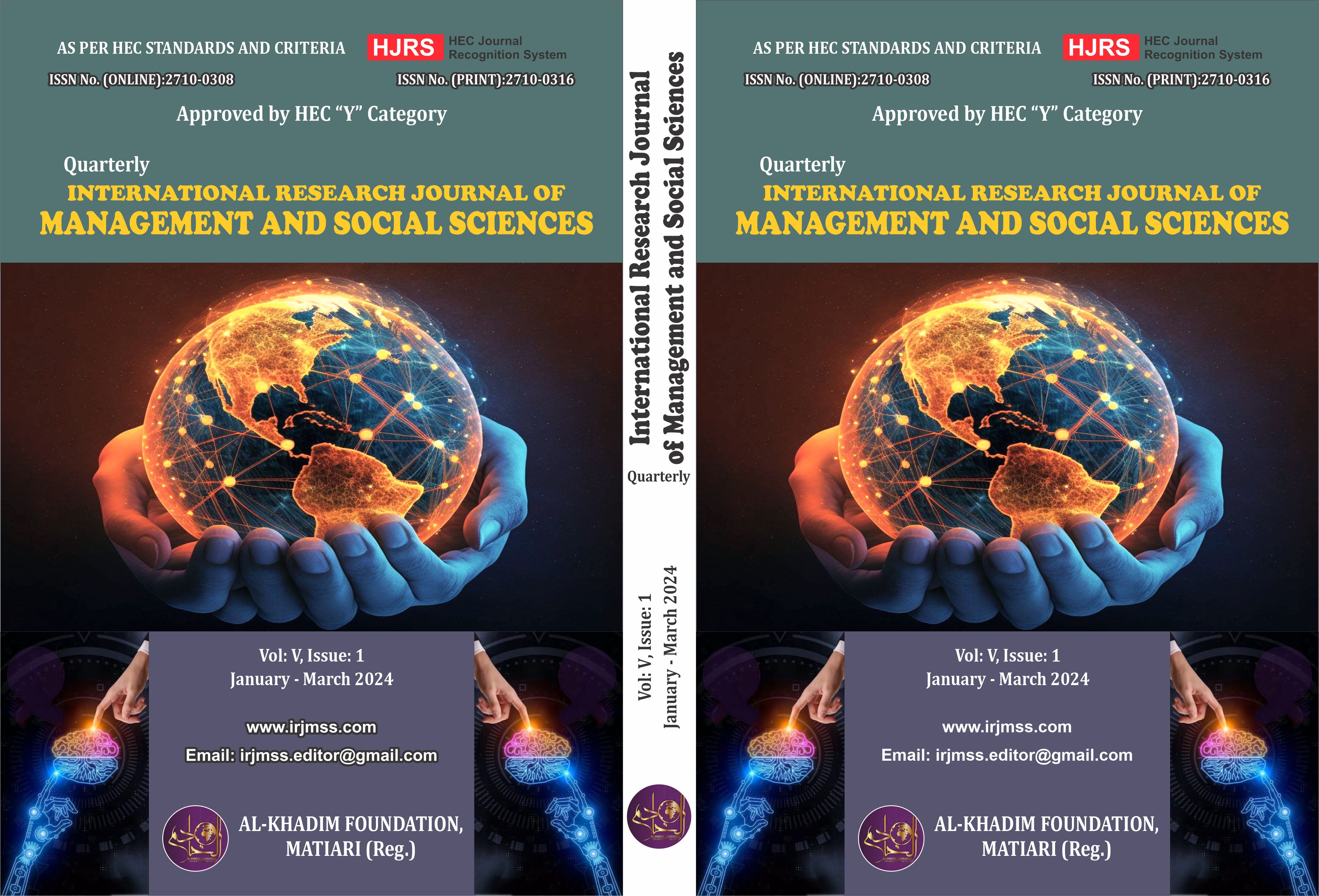Decoding Online Learning: Exploring Educational Taxonomies for Virtual Instruction
Keywords:
Typology of educational taxonomy, Bloom’s taxonomy, Bloom’s revised taxonomy, Bloom’s digital taxonomy, online instructionAbstract
It is crucial for many researchers to examine the critical issues involved with understanding the nature and function of prescriptive educational taxonomies for improving the efficiency and effectiveness of rigorous instructional design solutions adaptable and applicable to the growing field of Online learning, user-centered design, and technologically distributed distance learning environments. The key aim of this paper is to look at various educational taxonomies specifically available in literature and determine the most suitable and relevant taxonomy particularly in Online instruction to attain the learning objectives. Extensive literature review was made to get familiarity with various taxonomies and it was observed that a long list of educational taxonomies is available in literature such as Bloom’s original taxonomy (1956) which is revised by Andeson & Krathwohl in 2001, Gegne (1977), Merrill (1983), and Simpson and Harrow (1972). Among all of these no one is considered as appropriate for designing and planning instruction for Online education. In 2007 Bloom’s Digital taxonomy appears on the canvas of educational taxonomies that is known as most suitable and relevant taxonomy specifically in the field of Online instruction.
References
Abalkheel, A. (2022). Amalgamating Bloom’s taxonomy and artificial intelligence to face the challenges of online EFL learning amid post-COVID-19 in Saudi Arabia. International Journal of English Language and Literature Studies, 11(1), 16-30.
Akash, C. (2016). Instructional Objectives: Purpose and Methods of Stating It. Retrieved fromYourArticleLibrary.com: http://www.yourarticlelibrary.com/education/instructional-objectives-purpose-and-methods-of-stating-it/64780/
Al Maani, D., & Shanti, Z. (2023). Technology-Enhanced Learning in Light of Bloom’s Taxonomy: A Student-Experience Study of the History of Architecture Course. Sustainability, 15(3), 2624.
DeWitt, P. (2014). What's Our Best Taxonomy? Bloom's or SOLO? Retrieved from Education Week: http://blogs.edweek.org/edweek/finding_common_ground/2014/02/whats_our_best_taxonomy_blooms_or_solo.html
Didau, D. (2012). Introduction to SOLO taxonomy. Retrieved from SlideShare: http://www.slideshare.net/didau/introduction-to-solo-taxonomy
Ellis, V. A. (2016). Introducing the Creative Learning Principles: Instructional Tasks Used to Promote Rhizomatic Learning through Creativity. Clearing House: A Journal of Educational Strategies, Issues and Ideas, 89 (4-5), 125-134.
Filcher, C., & Miller, G. (2000). Learning Strategies for Distance Education Students. Journal of Agricultural Education, 41 (1).
Harden, R. M. (2002). Learning outcomes and instructional objectives: is there a difference? Medical Teacher, 24 (2), 51–155.
Hattie, J. (2013). SOLO Taxonomy versus Bloom's Taxonomy: Creating best tests using Bloom's taxonomy or the SOLO classification. Retrieved from HookED Wiki: file:///C:/Users/urfas_000/Desktop/PhD/EME/Solo%20Taxonomy/SOLO%20Taxonomy%20versus%20Bloom's%20Taxonomy%20-%20HookED%20Wiki.html
Hattie, J. C., & Brown, L. G. (2004). Cognitive processes in as TTle: The SOLO taxonomy. Auckland: Auckland UniServices Ltd.
Hegde, S. A., & Deal, J. (2013). Seinfeld and Economics: How to Achieve the Revised Bloom’s Taxonomy in an Introductory Economics Class. International Journal of Teaching and Learning in Higher Education, 25 (3), 388-395.
Holovatenko, T. (2023). Developing Digital Collaboration Skills of Elementary School Pre-Service Teachers of English Using Bloom's Taxonomy. In Innovations in Digital Instruction Through Virtual Environments (pp. 60-83). IGI Global.
Howell, L. L., Roach, G. M., & Clark, D. C. (2003). Use of Explicit Instructional Objectives to Achieve Program Outcomes and Facilitate Assessment: A Case Study. Int. J. Engng Ed., 19 (6), 828-835.
Huang, X., & Hu, Z. (2015). On the Validity of Educational Evaluation and its Construction. Higher Education Studies, 5 (4).
IACBE. (2016). Bloom’s Taxonomy of Educational Objectives and Writing Intended Learning Outcomes Statements. USA: International Assembly for Collegiate Business Education.
Krathwohl, R. D. (2002). A Revision of Bloom's Taxonomy: An Overview. Theory Into Practice, 41 (4).
Lehmann, J. I., & Mehrens, A. W. (1991). Measurement And Evaluation in Education and Psychology. United States of Americ: Ted Buchhol.
McGrath, M., & Willcutt, W. (2022). The creative use of Thinking Maps to embed Blooms' Taxonomy within teaching, learning and assessment. Educatio: Jurnal Pendidikan STAIM Nganjuk, 6(4), 346-372.
McNeil, R. C. (2011). A Program Evaluation Model: Using Bloom’s Taxonomy to Identify Outcome Indicators in Outcomes Based Program Evaluations. Journal of Adult Education, 40 (2).
Munzenmaier, C., & Rubin, N. (2013). Bloom's Taxonomy: What's Old Is New Again. Santa Rosa: The eLearning Guild.
O’Neill, G., & Murphy, F. (2010). Guide to Taxonomies of Learning. UCD TEACHING AND LEARNING/ Resources.
Osters, S., & Tiu, F. S. (2015). Writing Measurable Learning Outcomes. 3rd Annual Texas A&M Assessment Conference.
Roberts, C. (2011). Blooms Digital Taxonomy. Retrieved 10 16, 2016, from Digital Learning World: Technology Integration for 21st Century Learning: http://digitallearningworld.com/bloms-digital-taxonomy
Singh, D., Tripathi, P. K., & Patwar, K. (2016). “What do Ayurveda Postgraduate Entrance Examinations actually assess?” – Results of a five-year period question-paper analysis based on Bloom's taxonomy. Journal of Ayurveda and Integrative Medicine, 7 (3), 167-172.
Smith, r. (2012, July 2). Writing Measurable Learning Objectives. Retrieved from http://teachonline.asu.edu/2012/07/writing-measurable-learning-objectives/
Soto, V. J. (2014). Writing Instructional Objectives: Student Learning Outcomes. Mountain View College Core Curriculum Evaluation Committee.
Stanny, C. J. (2016). Reevaluating Bloom’s Taxonomy: What Measurable Verbs Can and Cannot Say about Student Learning. Center for University Teaching, Learning, and Assessment (CUTLA), 6 (4).
Sweet, C., Blythe, H., & Rusty, C. (2016). Why the Revised Bloom's Taxonomy Is Essential to Creative Thinking? The National Teaching & Learning Forum, 26 (1), 7-9.
Ugur, H., Constantinescu, P. M., & Stevens, M. J. (2015). Self-Awareness and Personal Growth: Theory and Application of Bloom’s Taxonomy. Eurasian Journal of Educational Research (60), 89-110.
Wang, J., Wei, W., Ding, L., & Li, J. (2017). Method for analyzing the knowledge collaboration effect of R&D project teams based on Bloom’s taxonomy. Computers & Industrial Engineering, 103, 158-167.
Wilson, L. O. (2016). Anderson and Krathwohl – Bloom’s Taxonomy Revised: Understanding the New Version of Bloom’s Taxonomy. Retrieved from http://thesecondprinciple.com/teaching-essentials/beyond-bloom-cognitive-taxonomy-revised/
Yanchinda, J., Yodmongkol, P., & Chakpita. (2016). Measurement of Learning Process by Semantic Annotation Technique on Bloom's Taxonomy Vocabulary. International Education Studies, 9 (1), 107-122.






